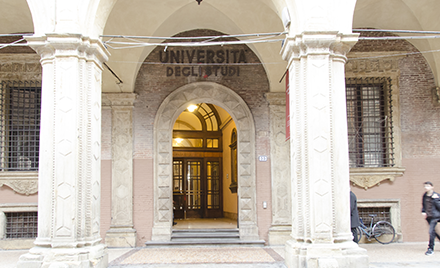
Learning from our customers in Italy
As so many organizations have shifted to remote work during COVID-19, we are hearing incredible stories from customers discovering new ways to connect, collaborate, and keep business moving. We want to share what they are learning. Each week we are spotlighting customers in one impacted region around the globe. Last week we shared stories from the Greater China Region. Today I’ve asked my colleague Luba Manolova, Senior Business Group Lead for Microsoft Italy, to share examples of customers in her country who, faced with extraordinary and difficult circumstances, have found innovative new ways to work.
Microsoft’s team in Milan moved to remote work in February. And since March 11, Manolova says “the entire country has been under social distancing or shelter in place orders with only a few sectors that can continue their operations, mostly to guarantee basic needs such as food and medical supplies.” Educational organizations, meanwhile, are completely shut down. Despite spending their days and nights at home, Manolova says that “as a team, we’ve never felt so close, both in managing together our daily activities and in helping local communities and companies to navigate through these uncharted times.” They’ve kept up morale with virtual coffee breaks and Microsoft Teams-based yoga classes, and joined with partners to find new ways to help customers, including building a solidarity network with partners to support their small and medium-sized business customers. Here are some stories from customers adjusting to remote work in Italy.
Vo’ Euganeo is a small village in Veneto, a region in the north of Italy that was among the first to move into staying home fulltime. Alfonso D’Ambrosio, the Principal of a group of local kindergartens and primary and secondary schools known collectively as the Istituto Comprensivo di Lozzo Atestino, had already deployed Microsoft Office 365 Education in several classrooms. But with schools shut, he decided to extend remote learning to teachers and students in all 33 classrooms in the school. Teachers were quickly trained on the tools, learning good digital practices as well. And to keep students engaged in distance learning, the duration of digital classes was reduced from one hour to 20 to 30 minutes. Lessons were also integrated with “moments of empowerment” for students—synchronous and asynchronous activities to be carried out through Microsoft Teams in groups. The schools also shortened the academic week and began scheduling virtual check-ins with the students’ families.
D’Ambrosio says the schools’ community culture helped immensely in the process. He describes his teachers as “a community of people and professionals who want their students to succeed in life and who push them to do their best, despite challenges.” While some teachers had already embraced technology in the classroom, others faced a steep learning curve. “The extraordinary factor is that those teachers were able to convey their enthusiasm and knowledge to [those] people who were not digital at all before the pandemic,” the principal says.
Meanwhile, the 900-plus-year-old University of Bologna, also in northern Italy, reached out to Microsoft at the end of February to ask for support in bringing their classes online to help create learning continuity for the students. In its first week, the university went live with 50 percent of the classes, and by the second week they were at 100 percent, reaching out to 87,000 students with more than 3,600 courses online, with positive feedbacks from IT, faculty, and the students. “Unibo,” as the university calls itself, reports that the response was extraordinary, with students and teachers turning to social media to spread the news. As one professor put it on Twitter: “This was big.”
Like many of Italy’s most important industries, its wine business is based on longstanding traditions. With vineyards surrounding the town of Montalcino, in the Tuscan province of Siena, Ciacci Piccolomini D’Aragona makes world-renowned red wines. But when in-person tastings became impossible due to the outbreak, the winery adjusted to conduct its first digital wine tastings from its cellars using Microsoft Teams as the main tool. To do that, they shipped bottles to buyers around the world, then organized tastings via Teams. “The digital aspect of the tasting experience can be extended to our customers and distributors at the same time, anywhere they are located, and this is totally revolutionary for us,” the winery reports. “Our job is not only to produce wine, but also to communicate and sell it worldwide.” While business has been impacted by COVID-19, its staff of six are currently working remotely.
There is no question that Italy has been among the hardest-hit countries during the COVID-19 outbreak. Despite this enormous challenge, these organizations have evolved rapidly to serve their students, employees, and customers. They have shown us how schools can quickly enable digital learning by training teachers, agilely adapting schedules, and keeping the lines of communication open. And they’ve shown us how commercial organizations, including traditions-steeped industries like winemaking, can create new opportunities with digital tools. I hope that you have found their stories helpful and invite you to check back here often for more remote-work examples from our customers around the world.

